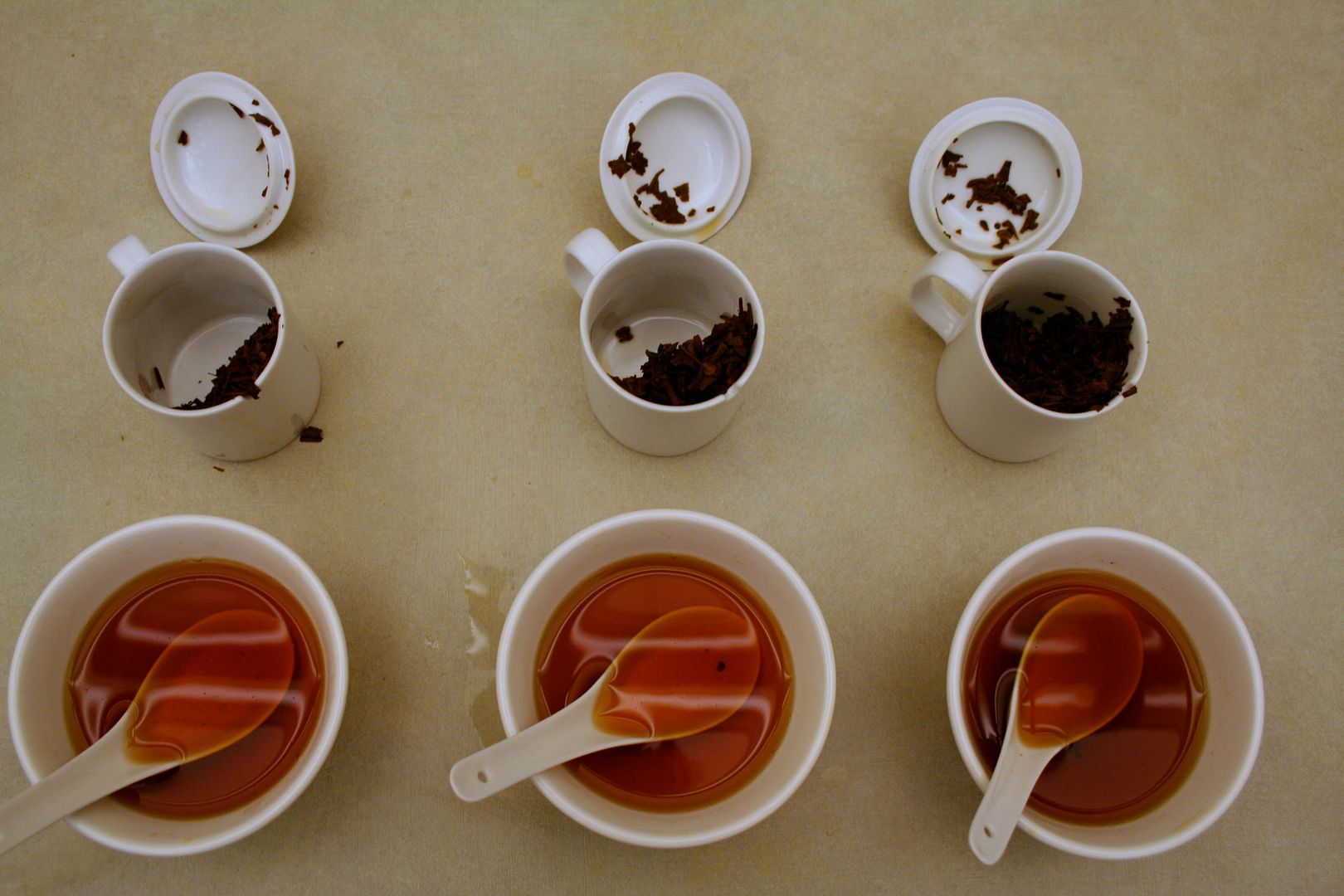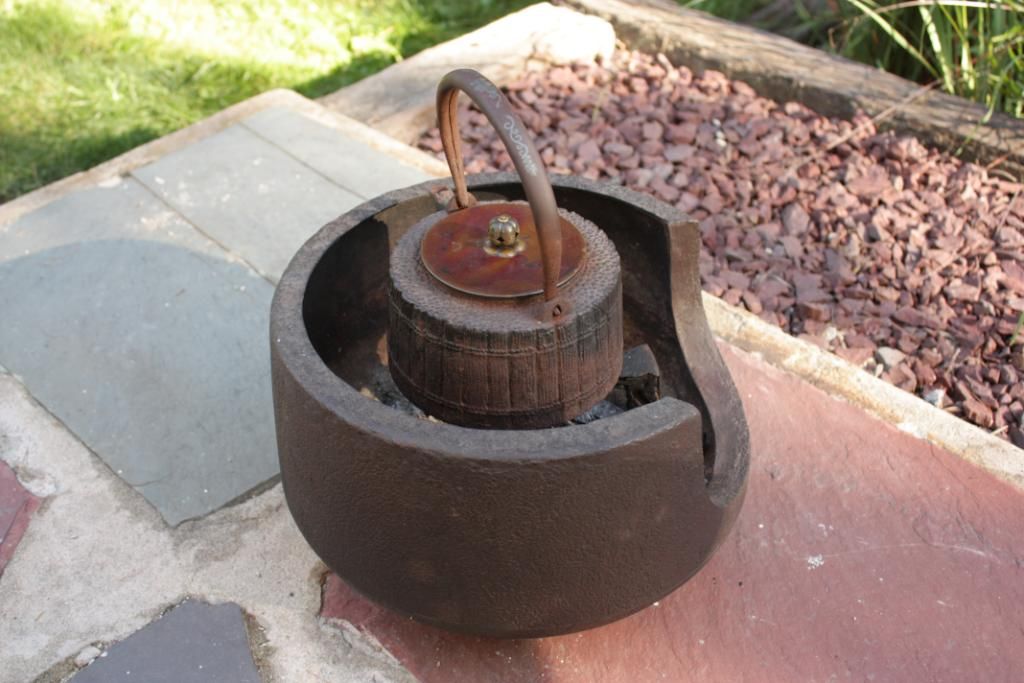I used to write a lot of “tea reviews”, if you can call it that. For maybe two years, this blog was mostly one review or another. Sometimes it’s an oolong, others a puerh, but generally, this blog was a daily report of what I was drinking that day.
In the past year or two, that has changed. I no longer talk about specific teas so much. I find it meaningless, at least for myself, because most of the time, the teas I drink are not interesting enough for me to talk about them. Other problems and issues, such as techniques, names, varietals, or teaware seem much more interesting. That, I think, has been largely what I have discussed for the past year or two.
These days, since I’ve been teaching a course on tea history and been translating some of the older texts on tea that are still unavailable in English, I’ve been thinking more about problems of history and how tea, as we know it, evolved over time. Reading some things from the Ming (1368-1644) today, it is remarkable to see that some of the places, such as Longjing, were already named as great tea producing areas. However, the Longjing that the author talked about is distinctly small scale — only a handful of tea was produced every year, and mostly the wealthy and influential get to drink it.
In many ways, that’s not unlike how tea still is today in China. The good stuff — the really good stuff, go to the top. Ordinary people, even if you have the money, often can’t buy such things, for they are of such limited quantity that they simply do not provide for the whole market. This is why, again and again, I say that places like Lao Banzhang do not produce teas to satisfy the general market, and that almost all Lao Banzhang old tree teas out there are fake. They just don’t make enough every year, and there is always an eager line of customers waiting for such things.
The same can be said of the best of the best Longjing, or Tieguanyin, or any number of widely sought after teas. This leads to the second thing that struck me — that fake teas already existed way back when. Of course, this is only natural, for there is money to be made in such a business, and lots of it too, if you’re any good. Fake tea and teaware are the bane of our existence today, but they have always been part of the problem for the tea fanatic. There is simply no way around it.
What is new, I think, is the speedy spread of information in our digital age, and to go along with that, the ease with which to spread misinformation about certain teas or teaware, or to hype up products that simply do not match their description. A friend remarked to me recently that in the online tea world, what passes as fact is usually snippets of information that most people seem to agree upon, even though “most people” includes many who are simply echoing what they have heard elsewhere. This is not an indictment of the general population of tea drinkers who post online. After all, when most of the sources available online about teas come from vendors, there is simply no way for the consumer to know what is marketing and what is good information.
There is good information out there. I had my students do a project where they had to use only online sources to find information on the six classifications of tea. The quality of their work was higher than I expected, and they mostly relied on vendor sites for the exact reason I stated — there just isn’t anything else out there, at least not in English. In Chinese or Japanese, you can often find hobby sites that are devoted to good information on topics such as tea or teaware. Even there you usually find plenty of disagreements, and are quickly overrun with vendors of various types who try to push their wares. Ultimately, tea is still a commodity, and whenever you talk about it, you will attract those who want to sell it.
What troubles me is when somebody says “XXX is a trusted vendor”. Trusted for what? Few vendors “know it all”. Some are more knowledgeable in certain areas, others only repeat what their supplier tell them. Most, at least among the online vendors, have had probably less than 10 years of experience in the tea world, sometimes much less. Their information is probably coming from whoever is supplying them with tea or wares. Many don’t know Chinese or Japanese, or at best, know bits and pieces, not really enough to carry on a meaningful conversation about the nuances of various kinds of tea they are dealing with. I get a lot of questions along the lines of “where should I buy my zhuni pot?” I have met yixing collectors who have been at it for four decades, and still tells me they occasionally buy fakes because they are hard to tell. If someone with that much experience can’t tell, then I must say I don’t really trust any sources online for such a thing, at least not among those who deal with such things in English that I’ve seen.
Of course, I am lucky in that I am native in Chinese and have access to people and places that allow me to bypass the online channels. The other thing I often hear is “well, unlike you, I can’t find those on my own”. I completely agree, and even in my case, many things are hard to find on my own, because I am not in Asia and don’t have the time to go very often. I too buy from online sources, but I generally am very cautious, some might say too cautious, in my approach. I don’t buy anything expensive, I don’t touch anything claiming to be old, and I don’t buy in bulk before trying the tea. Even if it is tea from a person whom I’ve dealt with before and know I can trust, the tea can still be no good for reasons having nothing to do with the vendor. It could simply be that I am not interested in that particular type of tea. It could be the season, or the region, or a number of other things. Buying things sight unseen in the tea world is really asking for trouble.
The Longjing story comes back as a good illustration of this problem — if the top grade Longjing is all locked up by the wealthy and powerful locals, why would anybody bother to sell it at a lesser price to foreigners? The same can be said of a lot of things, be it tea or teaware. I sometimes see pots on sale that do not look credibly old for the claim that is made, or for prices that are far too cheap, as a certain eBay vendor is well known to do. Why would anybody do that? There’s only one good explanation, and that is that the items in question are fakes.
I suppose what I want to say here is that a certain amount of skepticism is good, even if it is throwing cold water on a nice hobby. I love tea as much as anyone, but I don’t think we have enough of skepticism around in this world of tea vendors.








 RSS - Posts
RSS - Posts
Interesting.... would 250C in my oven work?